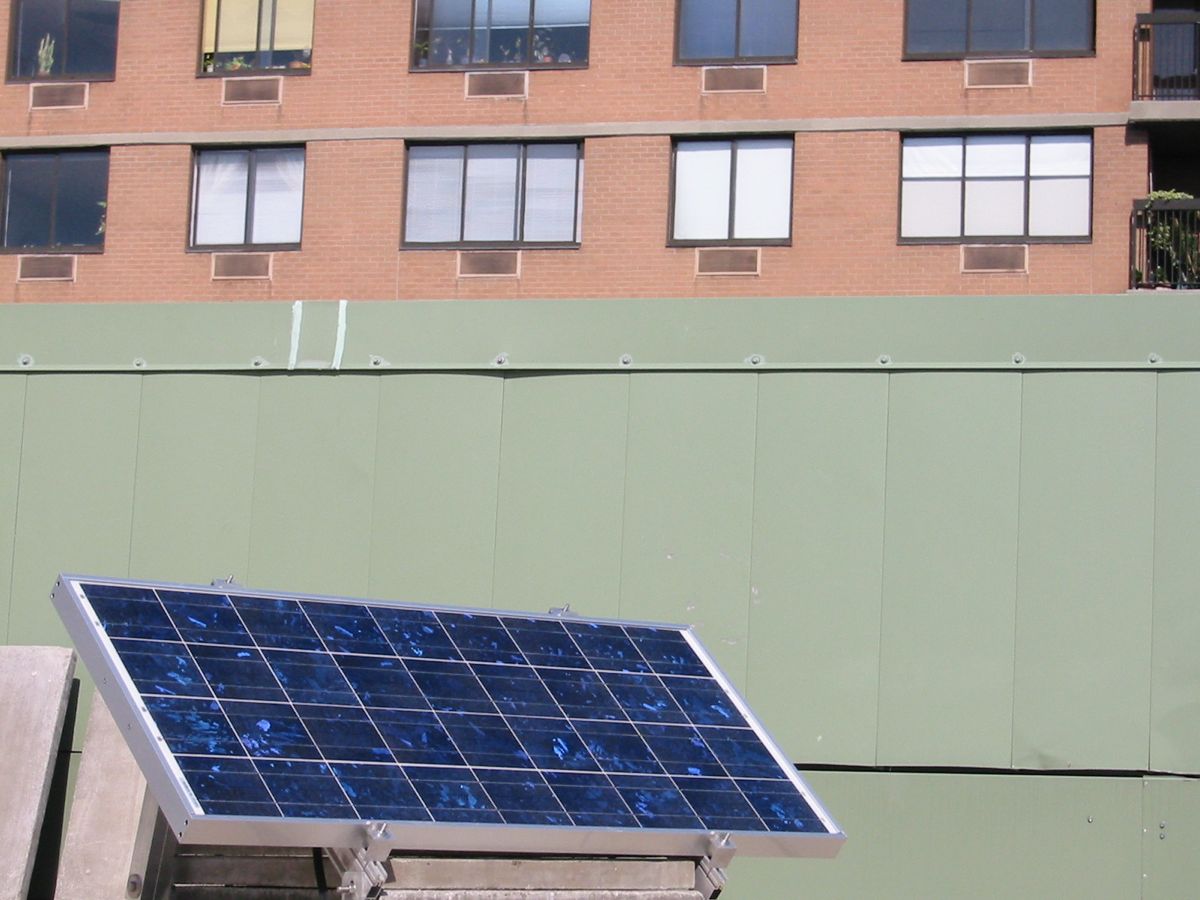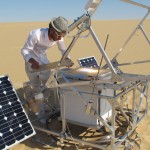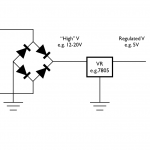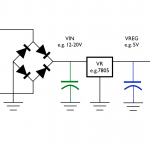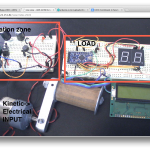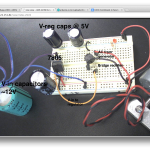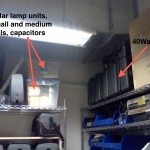Thursdays, 3:30 – 6PM
Go to: Main class page goto week: 01 02 03 04 05 06 07 | 08 09 10 11 12 13 14
Schedule Overview:
| Date | Class | Date | Class |
|---|---|---|---|
| 1/31 | 1. Intro | 3/28 | 8. Energy Storage: Overview |
| 2/7 | 2. Kinetic 1 | 4/4 | 9. Solar Field Trip, Energy Storage: Batteries |
| 2/14 | 3. Kinetic 2, Guest: HEVO | 4/11 | 10. Solar 3 |
| 2/21 | 4. Solar 1 | 4/18 | 11. Kinetic 3 |
| 2/28 | 5. Solar 2, Guest: RadiatorLabs | 4/25 | 12. Special topics |
| 3/7 | 6. Limits / Midterm workshop | 5/2 | 13. Final workshop |
| 3/14 | 7. Midterm presentations | 5/9 | 14. Final presentations |
| 3/21: Spring Break | No Class |
Student Documentation:
[row class=”row-fluid”]
[col class=”span4″]Anne-Marie Lavigne
Ben Cramer
David Rios
Erika Maher
Jay Zehngebot[/col]
[col class=”span4″]Jon Wasserman
Mary Fe
Maria Paula Saba dos Reis
Peter Terezakis[/col]
[col class=”span4″]Steve Cordova
Tom Arthur
Xuedi Chen
Pia Zaragoza[/col]
[/row]
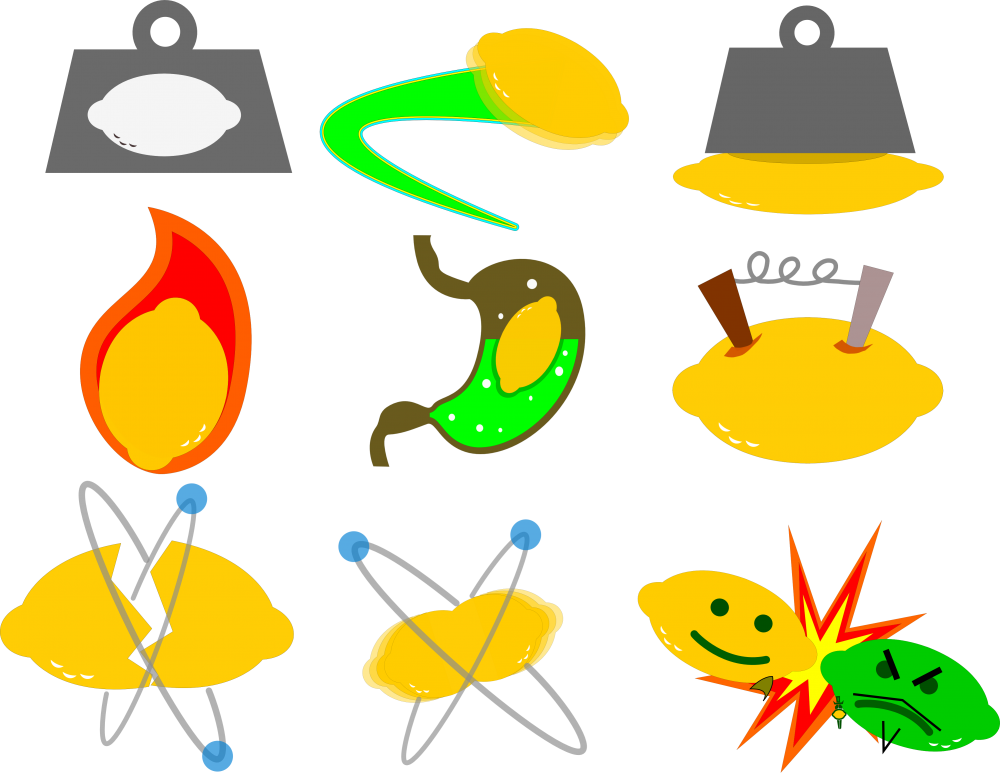
Week 1: Introductions
1/31/13
Pendulums and lemons tell us everything we need to know.
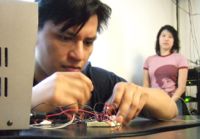 Most of your projects at ITP have an on button and a power supply – they are active energy users. Your projects are possible because computation has become extremely efficient – and abundant and cheap. The things you create may help make technology irresistible, an increasing part of daily life; the consequence of the on button is magnified.
Most of your projects at ITP have an on button and a power supply – they are active energy users. Your projects are possible because computation has become extremely efficient – and abundant and cheap. The things you create may help make technology irresistible, an increasing part of daily life; the consequence of the on button is magnified.
But if you’ve ever smelled that “hot electronics” smell from a frying TIP120 or LM7805, you’ve been closer than most to tackling questions about energy directly. And because of your work at ITP, you are in a good position to understand energy in a precise and nuanced way – an understanding generally all too lacking.
In this first class we begin the adventure of looking at the world – from the scale of an individual electronics project to the scale of the universe – in terms of energy. We introduce (or reintroduce) some of the few terms and units we will rely on throughout the semester: watts, joules, work, power. We’ll meet your new best friends – the first and second laws of thermodynamics.
The first class serves as an introduction to some of the larger themes we will pursue over the course of the semester. We look at the origins of the course and the relevant parts of my background, and hear from you about your experience and expectations.
Some previous class projects:
[row class=”row-fluid”]
[col class=”span2″]
[/col]
[col class=”span2″]
[/col]
[col class=”span2″]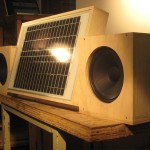
[/col][col class=”span2″]
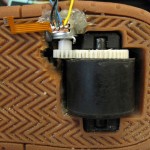 [/col]
[/col]
[col class=”span2″]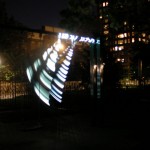 [/col]
[/col]
[col class=”span2″]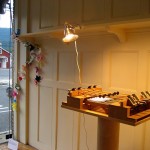 [/col]
[/col]
[/row]
And other recent projects:
[row class=”row-fluid”]
[col class=”span3″] [/col]
[/col]
[col class=”span3″] [/col]
[/col]
[col class=”span3″] [/col]
[/col]
[/row]
- Synthenetic
- Circuit Board
- SolaSystem
- Heely generators
- Light Swing
- Solar Xylophone and some of Rory’s other stuff.
- Sam Galison’s squeezebox (not pictured)
- Soccket (See PM story from 2010 and updated in 2011)
- Gravity Light
- Mine Kafon
- Solar Sinter
In class:
- 2003 Blackout presentation
- Build a pendulum. Measure or estimate the mass of the weight and its starting height. Record the duration the pendulum remains in motion.

Professor Calculus values the pendulum. - Sign up for a weekly R&D presentation.
Reading:
- An excerpt from Vaclav Smil’s earlier work: Energies: An Illustrated Guide to the Biosphere and Civilization. 1999, MIT Press, online here [pdf, 2.2mb]
Assignments:
- With your team from class, propose a device powered by the pendulum you built, and post a sketch or description of your idea on your class documentation site, along with the mass and height of the pendulum from in class.
- Send me the link to where you will be keeping your documentation. Remember – your link should take me just to stuff for this class.
- Find “converters” for next week’s in-class lab. DC gear head motors work very well. Steppers, or (to a lesser extent) piezo crystals are potential candidates.
Housekeeping:
- Get the Smil text.
- Sign up for a shop safety session if you did not take one last semester; and sign up for a shop cleaning time. See the pcomp site for signups.
Week 2: Kinetic Energy 1
2/7/13
We’ll quantify kinetic energy, and see how it is converted into electricity (accounting for almost all of the world’s electricity generation).
 Energy is either waiting to happen – potential – or is happening. When you look closely enough, everything happening is kinetic energy – things in motion. Sometimes we can’t look closely enough, so we invent terms like “heat” or “sound”, which are names for patterns of kinetic activity too small and complex to observe directly.
Energy is either waiting to happen – potential – or is happening. When you look closely enough, everything happening is kinetic energy – things in motion. Sometimes we can’t look closely enough, so we invent terms like “heat” or “sound”, which are names for patterns of kinetic activity too small and complex to observe directly.
When we consider a pendulum, we see an almost-perfect oscillation between potential energy and kinetic energy and back. But we can also observe energy leaving our system to its surroundings at a slow rate – the pendulum eventually comes to a stop. This week we’ll review the SI unit for energy and work – the joule – and its definition as force through distance (1 joule = 1 newton * 1 meter). A newton is a unit of force, defined as a that force necessary to accelerate a kilogram by 1 meter per second each second. If we lift an object, we do work moving its mass against the acceleration of gravity (9.8 m/s/s), and thus store energy in the elevated mass. All of this is summarized in Kinetic Energy (pdf).
A second presentation will give us a whirlwind tour of energy throughout the history of the universe, and arrive at some of history’s first useful “heat engines”, devices for turning the stored chemical energy of fuels into heat, and from heat into motion. The proliferation of these devices has shaped our modern world. This will bring us up to electromagnetic induction, the way to turn kinetic energy into electricity. We’ll cover that in more depth next week.
For our purposes, just about any motor is a ready-made generator. You were asked to find some to bring to class this week, and we’ll look at those. We’ll try them out, and assess their electrical performance. We’ll also begin looking at the circuits needed to condition their output (rectification via diodes, maybe a little smoothing with capacitors, maybe regulation), which will continue into next week.
In class:
- Lab: Generators. Topics include:
- Measuring current with a meter
- Measuring open circuit voltage, closed circuit current of a converter
- Intro to: Voltage regulators, bridge rectifiers, role of capacitors
- Kinetic Energy 2013 presentation (pdf)
- 5 Minute Energy Tour presentation (pdf)
- Kinetic/Electrical one-sheet
Reading:
- Smil, Energy, a Beginner’s Guide Chapters 1 and 2
- Energy Scavenging for Mobile and Wireless Electronics, Paradiso, Starner, 2005.
Assignments:
- Calculate the energy stored (in joules) in your pendulum using the mass and height measurements, and record this online. Using the duration you measured, calculate the average power, in watts, at which this initial energy was transfered to the environment. If you used all the initial potential energy in 10 seconds, what would the power be?
- Fill in the measured open-circuit voltage and closed-circuit current for your converter, using this Energy Conversion Worksheet.
- Create a circuit to safely power an LED from a kinetic input.
Week 3: Kinetic Energy 2
02/14/13
We’ll look at the connection between moti
on and electricity via induction.

As we’ve begun to see, induction is the way motion gets turned into electricity. To really get induction, we need to have a good understanding of the dual nature of electricity and magnetism. About the best, and most fun, reference I’ve found is this entry in the excellent Cartoon Guide to Physics by Larry Gonick and Art Huffman. Buy it! Note in particular how Lenz’ law relates to the conservation of energy.
MIT created a series of applets and videos that help visualize this relationship as well.
We’ll also continue refining our tools for conditioning the output of our generators into more usable forms. We might also discuss if, where and when it makes sense to use humans, animals, or those in between, to make electricity.
Guest: Jeremy McCool, HEVO (via ACRE)
In class:
- Lab: Conditioning out generators, powering a computational load
- Basic rectifier circuit explained
- Circuit from class
- Big Kinetic presentation [pdf] DEFERRED in favor of more lab time – we’ll double back to this post-midterm
- Strategies2013 [pdf] – basically what we did in the lab; we’ll look at this together in week 4.
Reading/review:
Assignments:
- Demonstrate powering an Arduino or similar load from your generator.
Week 4: Kinetic review / Solar 1
02/21/13
We’ll take the time to catch up with the labs from the last few classes. We’ll also take a first look at photovoltaics – a non-induction means of generating electricity.
In last week’s lab, we saw how to use a few basic parts – diodes, rectifiers (4 diodes in one package), linear regulators, and capacitors – to create a simple power supply for a project. The circuit we made had the advantage of being cheap and relatively easy to source, but had two main disadvantages, mainly around the linear regulator: It needed a input voltage high enough to clear the “headroom” required byby the 7805 (at least 6 volts, 7+ to be safe); and the linear regulator is not particularly efficient. The current in (at the higher voltage) will be the same as the current out (at 5V). We can compute power in / power out:
Power Out / Power In = (Vout * Iout) / (Vin * Iin)
The current is the same, so the efficiency is the same as the ratio of the output and input voltage. If we are only at the typical 7805 minimum, 7V, our efficiency is about 70% best-case. 7V leaves very little buffer for the circuit to handle variations in the input. If we give ourselves more of a buffer, our efficiency suffers: at 12V in and 5V out, it’s about 40%. The big heatsink on the back of our regulator is a clue as to what’s happening to the “lost” energy.
Enter DC-DC converters. These cousins of switching power supplies use PWM + inductors to accomplish a neat trick – they can have an output voltage higher than their input – these are called “step-up” or “boost” converters. They can also be more efficient across a wider input voltage range. Like linear regulators, they can also step down, or “buck”, a higher voltage input to a lower output. Depending on a number of factors, including the current passing through the converter, efficiency can be 90% or higher.
In the video below, I walk through using a boost-converter to to power a 5V Arduino with a stepper that gives about +4V at hand-cranked speed.
If you watch directly on Vimeo, the links in the description work as a table of context that jump to various sections:
0:00 – 0:55: Intro
0:55 – 4:57: Pulsing an inductor to create a momentary high voltage
4:57 – 6:30: Boost converters introduced
6:30 – 12:00 Determining the wiring of a stepper and hooking one up
12:00 – 18:00 Combining boost converter and stepper
18:00 – End: Schematic review
Other applications
The Joule Thief uses a variation of this to drive LEDs from very low voltage sources.
Adafruit’s walkthrough of the Mintyboost design process has excellent insight on selecting a boost converter IC and support components.
Sparkfun carries 3.3V and 5V step-up boards, like this one. These and other varieties live in the battery category.
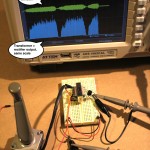 Bonus points: Solid-state DC-DC conversion, especially at high-powers, is a relatively recent and on-going development. On the grid, this technology enables modern high-voltage transmission lines to be DC, potentially reducing transmission costs. For alternating current, however, Victorian technology is sufficient to step up or down voltage via a standard transformer – essentially just two coils sharing one core; the ratio of the coils determines the input and output voltage.
Bonus points: Solid-state DC-DC conversion, especially at high-powers, is a relatively recent and on-going development. On the grid, this technology enables modern high-voltage transmission lines to be DC, potentially reducing transmission costs. For alternating current, however, Victorian technology is sufficient to step up or down voltage via a standard transformer – essentially just two coils sharing one core; the ratio of the coils determines the input and output voltage.
Since a stepper is AC, another way to get a higher voltage output is to use a transformer. At low powers, small signal transformers like this one could be useful for stepping up a stepper.
In class:
- Discuss HEVO presentation
- Review reading
- Look at Strategies presentation (pdf from last week)
- Measuring the energy in capacitors, and using caps to estimate power from generators and/or used by devices
- Discuss midterm project expectations and ideas
R&D:
- Maria Paula
- Jon Wasserman
Reading:
- Smil, Energy, a Beginner’s Guide Chapter 4
- Finalize midterm project concept, and give project a name. Come to next class ready to present concept.
- Obtain a solar panel to bring to class next week. This could be from the ER supplies (See pic) or one of your own.
Week 5: Solar 2
02/28/13
We’ll look at advanced topics related to PV.
We’ll catch up on PV. Instead of trying to cram last week’s lecture in during the class period, I’ve taken a stab at recording a video of it. Unlike the boost-converter video, which was essentially a demo, this was originally a lecture with slides, so we’ll have to see how effective this is online. Please let me know.
Class-related videos are now in their own channel: ITPEnergy. As before, watch at Vimeo for a clickable TOC with each video.
The Solar 1 lecture slides are here (pdf)
Section 1: Intro, putting PV in perspective
Section 2: Technical details
Section 3: Case study
Demo:
Guest: Marshall Cox, RadiatorLabs (via ACRE)
R&D:
- Jay Zehngebot
Reading:
- Smil, Energy, a Beginner’s Guide Chapter 5
Week 6: Limits / Midterm Workshop
03/07/13
We’ll look at fundamental limits to how useful energy can be to us. These concepts won’t help you build anything, but are part of being energy literate. We’ll trouble-shoot midterms with the remaining time.
One easy-to-understand limit is the Betz’ law relating to maximum possible turbine efficiency. A turbine is a machine for extracting kinetic energy from a moving column of fluid such as air or water. First we need to know the maximum amount of kinetic energy we’re going after. Just as every moving mass has kinetic energy, so does a moving column of fluid. Our turbine will have a diameter, and we can imagine a column of fluid flowing through our turbine at a given speed. In a given period of time (say, one second) a column of a certain height will pass through our turbine. We can derive the volume of the column from the height and diameter. Then we can derive the mass of fluid passing through our turbine per unit of time using the volume and the density of the fluid (e.g. y 1.225 kg/m3 for 15C air at sea level). We now have mass and velocity, and the kinetic energy is 1/2 mv2. That energy was per unit of time, so we can divide by time to also know instantaneous power.
Now we can imagine a perfect turbine – one with no central rotor, mass-less blades, etc. – no dead weight, only a perfect theoretical machine for extracting kinetic energy from a moving fluid. Any of the messy “real-world” engineering issues we will inevitably encounter will only lower the efficiency of our ideal machine.
Finally, we can imagine a set of boundary cases. What if our turbine extracted no kinetic energy from the fluid? In that case it wouldn’t be a very good turbine! The efficiency is 0. But what if it extracted all the kinetic energy? Good, right? 100% efficient. But wait – the fluid behind the turbine is now not moving, and no new fluid can enter to turn the rotor. By trying to extract all the energy, we immediately end up in a condition where we can do no further work – 0% efficiency again! In other words, at least some of the incoming kinetic energy is not available to us because it must remain to allow the turbine to keep functioning.
In between these two extremes there is a sweet spot, and that’s what Betz (and some others working independently) calculated. The Betz limit for a turbine is:
Betz’ limit: 59.3%
And remember – that’s an ideal limit. Other approaches that consider more real-world effects place maximum efficiency much lower. Be suspicious of turbine designs that claim to approach, let a lone surpass, the Betz limit.
Similar limits exist elsewhere. In 1824, when heat was believed to be an actual fluid that could be passed from one object to another, Sadi Carnot derived the maximum efficiency of an ideal machine for converting heat into work. The Carnot efficiency is:
Carnot efficiency: 1 – (TC / TH)
where TC and TH are the absolute temperatures of the cold and hot sides of the engine, respectively. Absolute as in relative to absolute zero, the temperature at which molecular motion stops. So in our real world, where ambient temperatures dictate the available cold side of a heat engine, the maximum efficiency has a low upper limit – the ratio of TC/TH cannot approach 0 because TC has a relatively high value. And again, this is an ideal limit. Any real-world instance of a heat engine will have lower efficiency.
The best we can do is make TH as high as possible. That’s hard to do in small, mobile applications like car engines – making an engine strong enough to withstand extreme temperatures makes it heavier and larger. So small engines tend to have low thermal efficiencies – around 20% actual, 37% theoretical maximum. Diesel engines operate at higher compression and temperatures, so have a slightly higher efficiency. For stationary applications, the Carnot efficiency favors massive power plants with low surface-area-to-volume ratios that can operate at extreme temperatures.
I’m told (by wikipedia) that the limit for a single-junction solar cell is 37.7%, and for an infinite series of ideal junctions 86%.
In the preceding discussion the concept of the ideal and the real came up a lot. It is always tempting to wish away the real world. The energy is there, if only we could get it! But this is the real world. As you work on your midterms, consider the role that cost, complexity and time play in keeping you from getting every last joule of available energy from a given system. These are limits too. Eventually gathering up the crumbs becomes too difficult to make a return on the effort invested.
Mix into these considerations Koomey’s law (referenced by Deciwatt: the trend for computation/joule to double every ~1.5 years) and the Jevons paradox (that increased efficiency in using a resource tends to increase, rather than decrease, the use of that resource).
R&D:
- Benjamin Cramer
Week 7: Midterm presentations
03/14/13
We’ll look at the midterm projects.
Midterm technical requirements:
- Understand and quantify the energy input and consumption of your system. (E.g. “The Raspberry Pi runs at 3W provided directly by a hand generator with capacitors used for momentary smoothing” or “1W solar is accumulated over a day in a 15 Watt-hour LiPo battery to run a 12W load as long as possible (typically 20 minutes to 1 hour).”
- Use direct measurements of power/energy wherever possible (e.g. measuring current and voltage in electrical systems, calculating kinetic or potential energy, etc.).
- Give your project a name.
- Document your project on your class site.
(Peter – your turn is coming!)
SPRING BREAK 3/18 – 3/24
Week 8: Energy Storage 1 – General concepts
03/28/13
Midterm presentation from Peter.
Material from class:
R&D:
- David Rios
- Anne-Marie Lavigne
Week 9: Solar Field Trip; Energy Storage 2 – Batteries
04/04/13
We’ll look at solar hands on in Washington Square Park using the department solar kits. We’ll examine batteries in more detail.
Final project status:
By now you should have:
- Made final selection of project
- Sourced any materials you may need
- Be familiar with prior art related to your concept
- Be familiar with energy fundamentals of your project
This week you should:
- Order anything you need + don’t have
- Plan fabrication of anything you will be making
- Finish prior art research
- Draft outline for final presentation
R&D:
- Tom Arthur
- Steve Cordova
Week 10: Solar 3
04/11/13
We’ll look at advanced concepts in solar in more detail.
Slides: Solar-2.pdf
Final project status:
By now:
- All materials on hand
- Some process documentation online
- Final presentation outlined
This week:
- Fabricate custom components
- Finalize software components
- Continue process documentation
- Begin drafting final presentation based on outline
R&D:
- Xuedi Chen
- Pia Zaragoza
Week 11: Kinetic 3
04/18/13
We’ll look at utility-scale turbines in more detail.
Slides: Turbines.pdf
In class: Prototype preview
Bring your hardware to class for review.
Final project status:
By now:
- All parts fabricated or delivered
- Components of project tested individually
- Process documentation in… process
- Presentation rough draft in process
This week:
- Assemble, Test, Measure, Revise
- Continue process documentation
- Continue presentation draft
- Send outline/draft to me by class next week
R&D:
- Peter Terezakis
Week 12: Monitoring, Horizons, Special Topics
04/25/13
If Edison or Tesla were still alive, they would recognize most of today’s electrical grid as similar to what they invented. The megastructure that delivers electricity to homes and businesses cannot be updated quickly – it is too large – and so we mostly have to live with solutions that were engineered a century ago.
Today we hear a lot of talk of the “smart grid” – a sort of sensor overlay to the existing grid that will enable the grid to be more nimble and resilient. At the home and building level, this takes the form of more precise and real-time electricity metering. Continuously monitored per-circuit or per-outlet sensors augment the per-building, once-a-month meter already in place. This allows users to see the immediate energy impact of actions like unattended vampire loads, and allows utilities to progress towards variable time-of-day pricing that more closely match the cost of electricity with the moment-to-moment demand.
Consumer hardware like the Kill-A-Watt (modified into the Tweet-A-Watt) and the EnergyHub Dashboard (EnergyHub is based in Brooklyn) have the potential to make our home “grids” smarter, or at least more visible.
Most larger solar includes some kind of monitoring. Our roof-top panel uses this slightly-more-advanced charge controller than the ones in the solar kits, and this one has a RS-232 port on it. On occasion, the data has been scraped and logged here. Some solar projects log their data to publicly available sites – see for example NYC-based AltPower. Often logging is integrated with the inverters that connect solar installations to the grid. For example, SMA supplies a networked Web Box that can push data to the web, or provide data via FTP. Data looks like this file from Riverhouse on 2010-04-27.
Whether solar or not, many buildings use what is called a “Building Management System” or BMS; Johnston Controls is a major example. They have built-in UI’s; other companies provide better-looking and/or more flexible “dashboards.” Monitoring, along with other retrofits, can have major energy savings. The Empire State Building recently undertook a major energy overhaul financed entirely by the projected energy savings.
Negawatts (energy efficiency) will only go so far though. Billions of new “non-legacy” (i.e. no inherited grid or energy infrastructure) are coming online and, no matter how efficiently, will be new energy consumers. Without the ability to cheaply store renewable energy, there is a low limit to how much they can help. Storage is key.
Daniel Nocera thinks he has a solution in the form of a cheap, robust catalyst that can store renewable energy supplies by electrolyzing water into hydrogen and oxygen (note – his solution still requires solar panels and a fuel cell, ponts missed by much of the mainstream reporting on the work). In these short and long talks he summarizes his work, and addresses the viability of other energy sources along the way.
By now:
- 1 bounce on concept complete
This week:
- 2nd bounce on concept if necessary
- Finish final presentation
- Finish process documentation
Week 13: Final Workshop
05/02/13
This will be an open class for trouble shooting final projects.
Final project status:
By now:
- All done
This week:
- Polish prototype and presentation
R&D:
- Mary Fe
Week 14: Final Presentations
05/09/13
